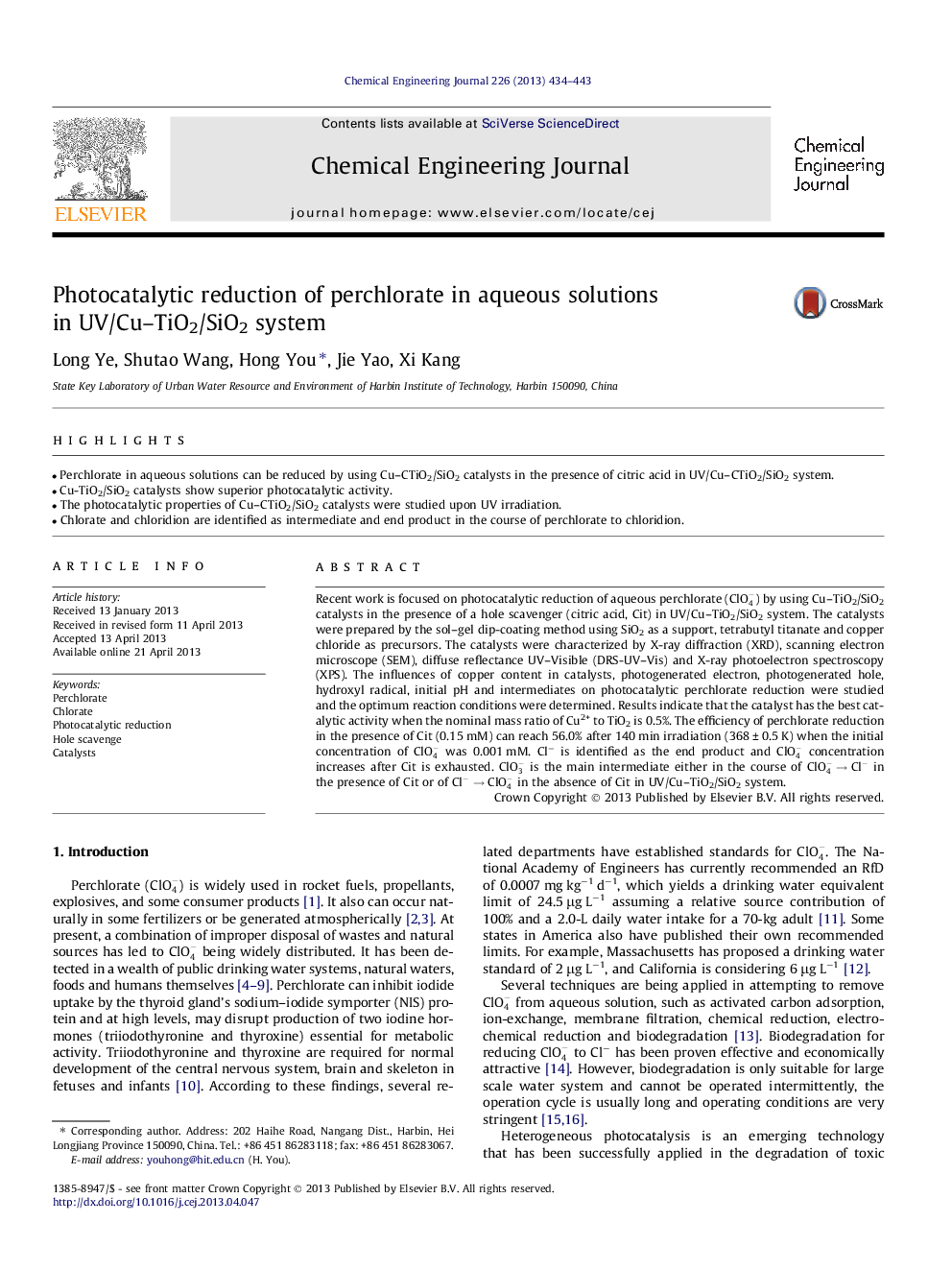| Article ID | Journal | Published Year | Pages | File Type |
|---|---|---|---|---|
| 6587678 | Chemical Engineering Journal | 2013 | 10 Pages |
Abstract
Recent work is focused on photocatalytic reduction of aqueous perchlorate (ClO4-) by using Cu-TiO2/SiO2 catalysts in the presence of a hole scavenger (citric acid, Cit) in UV/Cu-TiO2/SiO2 system. The catalysts were prepared by the sol-gel dip-coating method using SiO2 as a support, tetrabutyl titanate and copper chloride as precursors. The catalysts were characterized by X-ray diffraction (XRD), scanning electron microscope (SEM), diffuse reflectance UV-Visible (DRS-UV-Vis) and X-ray photoelectron spectroscopy (XPS). The influences of copper content in catalysts, photogenerated electron, photogenerated hole, hydroxyl radical, initial pH and intermediates on photocatalytic perchlorate reduction were studied and the optimum reaction conditions were determined. Results indicate that the catalyst has the best catalytic activity when the nominal mass ratio of Cu2+ to TiO2 is 0.5%. The efficiency of perchlorate reduction in the presence of Cit (0.15 mM) can reach 56.0% after 140 min irradiation (368 ± 0.5 K) when the initial concentration of ClO4- was 0.001 mM. Clâ is identified as the end product and ClO4- concentration increases after Cit is exhausted. ClO3- is the main intermediate either in the course of ClO4-âCl- in the presence of Cit or of Cl-âClO4- in the absence of Cit in UV/Cu-TiO2/SiO2 system.
Related Topics
Physical Sciences and Engineering
Chemical Engineering
Chemical Engineering (General)
Authors
Long Ye, Shutao Wang, Hong You, Jie Yao, Xi Kang,
